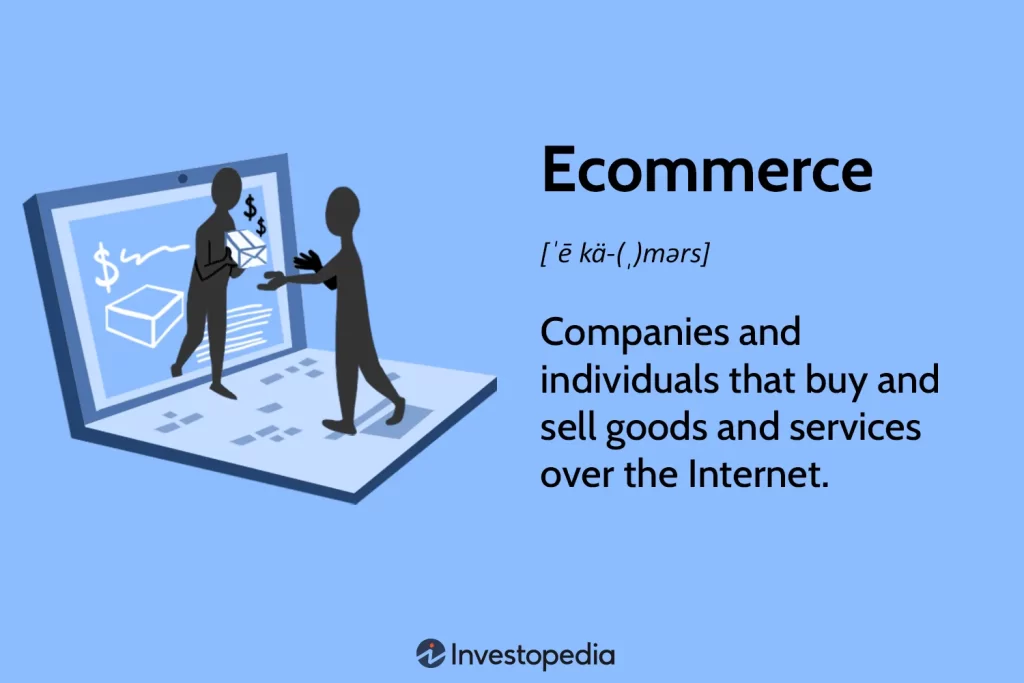The digital age has transformed the landscape of commerce, giving rise to the unstoppable force of e-commerce. As businesses aim to reach a global audience, the strategies for expansion have undergone significant evolution. In this article, we’ll explore the dynamic world of e-commerce and delve into the strategies and challenges that businesses face when expanding their digital footprint on a global scale.
Table of Contents
The Evolution of E-commerce
E-commerce has transcended geographical boundaries, evolving from local online stores to global marketplaces. The internet’s global reach has opened up endless possibilities for businesses, allowing them to tap into international markets with relative ease.
1: Cross-Border Trade
Cross-border trade is at the forefront of e-commerce evolution. Businesses are venturing beyond their domestic markets to access a global customer base. To succeed in this arena, they must consider factors like international shipping, customs regulations, and localized customer experiences.
2: Digital Marketing on a Global Scale
Expanding globally means catering to diverse audiences with unique preferences and languages. Digital marketing strategies must adapt accordingly. Businesses are increasingly focusing on localized content, targeted advertising, and international SEO to connect with their global customers effectively.
3: Supply Chain Optimization
The backbone of e-commerce expansion is a well-optimized supply chain. Efficient inventory management, streamlined logistics, and strategic warehousing locations are crucial for meeting global demand and minimizing shipping costs and delivery times.
4: Navigating Regulatory Hurdles
Expanding globally brings a host of regulatory challenges. Businesses must navigate varying tax laws, data protection regulations, and product compliance standards across different regions. Staying informed and compliant is essential to avoid legal pitfalls.
5: Leveraging E-commerce Platforms
The digital age has given rise to powerful e-commerce platforms that simplify global expansion. Businesses can leverage platforms like WordPress, Shopify, Magento, and WooCommerce to create robust online stores with international capabilities, including multi-currency support and localized checkout processes.
6: Building Trust in a Global Market
Earning trust in a global market is paramount. Customers need to feel confident about the security of their data and the reliability of the products or services. Trust can be built through transparent policies, secure payment gateways, and customer reviews and ratings.
7: The Future of Global E-commerce
The future of global e-commerce is marked by continuous innovation and adaptation. Businesses must stay agile, embracing emerging technologies like AI, virtual reality, and blockchain to enhance the customer experience and streamline operations.
Diverse Range of B2B E-commerce Models
E-commerce encompasses a wide spectrum of business models, including Business-to-Business (B2B) commerce. While e-commerce is often associated with Business-to-Consumer (B2C) transactions, the B2B segment plays a significant and growing role in the digital commerce landscape.
Within the B2B e-commerce segment, there’s a diverse range of models, including:
- Wholesale E-commerce: Businesses can purchase products in bulk at wholesale prices through online platforms. This is common in industries like manufacturing and retail.
- Manufacturers Selling to Distributors: Manufacturers can use e-commerce to sell products directly to distributors, streamlining the supply chain and reducing costs.
- Online Marketplaces: B2B online marketplaces bring together multiple sellers and buyers in one digital space, creating a dynamic environment for businesses to discover and trade with one another.
- Subscription-Based Services: Some B2B e-commerce models offer subscription-based services, providing businesses with ongoing access to products or services, often with added features or support.
- Customized Solutions: B2B e-commerce can offer personalized solutions for businesses, allowing them to request custom quotes, configure products, or negotiate terms online.
B2B Commerce Case
As representatives of the machinery industry, companies like Kone Cranes, Dafang Crane, DGCRANE primarily operate under the B2B business model. They design, manufacture, and provide customized crane solutions to meet the specific needs of businesses across diverse sectors. Additionally, their comprehensive services, global reach, and commitment to quality make them key players in the B2B crane industry, serving as crucial partners to businesses in need of reliable lifting and material handling solutions.
- B2B Specialization: Focus on the B2B sector. They specialize in designing and producing a wide range of cranes for industrial and commercial applications. Including bridge crane, gantry crane, jib crane, electric hoist and other lifting equipment
- Customization: Offers customized solutions to meet the unique requirements of B2B customers. They work closely with businesses to design and manufacture cranes that align with specific operational needs.
- Comprehensive Services: They provide services such as installation, commissioning, maintenance, and technical support to ensure the reliability and longevity of their crane systems.
- International Presence: Their commitment to quality and customer satisfaction has earned them a strong reputation among businesses in various industries.
E-commerce is a broad and evolving field that encompasses B2C and B2B transactions, among others. The rise of B2B e-commerce has revolutionized the way businesses conduct trade, emphasizing efficiency, cost savings, global reach, and customization. As technology continues to advance, the B2B e-commerce sector is expected to grow and adapt, offering even more opportunities for businesses to thrive in the digital age.
Conclusion:
In the digital age, e-commerce is more than just a trend; it’s a global revolution. The strategies for expanding digitally across borders are evolving rapidly to meet the demands of a global audience. Businesses that successfully navigate cross-border trade, employ effective digital marketing, optimize their supply chains, and navigate regulatory challenges will thrive in this dynamic e-commerce landscape. As we look ahead, innovation and adaptation will remain the cornerstones of global e-commerce success, ushering in an exciting era of digital commerce on a global scale.

